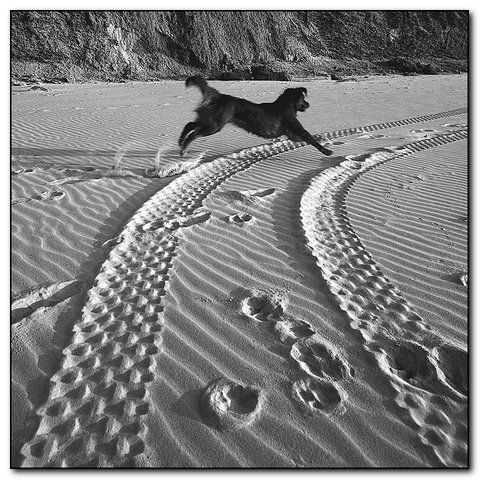|
|
Dog
|
Although experts largely disagree over the details of dog domestication, it is agreed that human interaction played a significant role in shaping the subspecies. Shortly after domestication, dogs became ubiquitous in human populations, and spread throughout the world. Emigrants from Siberia likely crossed the Bering Strait with dogs in their company, and some experts suggest the use of sled dogs may have been critical to the success of the waves that entered North America roughly 12,000 years ago. Dogs were an important part of life for the Athabascan population in North America, and were their only domesticated animal. Dogs also carried much of the load in the migration of the Apache and Navajo tribes 1,400 years ago. Use of dogs as pack animals in these cultures often persisted after the introduction of the horse to North America.
The current consensus among biologists and archaeologists is that the dating of first domestication is indeterminate. There is conclusive evidence dogs genetically diverged from their wolf ancestors at least 15,000 years ago, but some believe domestication to have occurred earlier. It is not known whether humans domesticated the wolf as such to initiate dog's divergence from its ancestors, or whether dog's evolutionary path had already taken a different course prior to domestication. For example, it is hypothesized that some wolves gathered around the campsites of paleolithic camps to scavenge refuse, and associated evolutionary pressure developed that favored those who were less frightened by, and keener in approaching, humans.
The bulk of the scientific evidence for the evolution of the domestic dog stems from archaeological findings and mitochondrial DNA studies. The divergence date of roughly 15,000 years ago is based in part on archaeological evidence that demonstrates the domestication of dogs occurred more than 15,000 years ago, and some genetic evidence indicates the domestication of dogs from their wolf ancestors began in the late Upper Paleolithic close to the Pleistocene/Holocene boundary, between 17,000 and 14,000 years ago. But there is a wide range of other, contradictory findings that make this issue controversial.
Archaeological evidence suggests the latest dogs could have diverged from wolves was roughly 15,000 years ago, although it is possible they diverged much earlier. In 2008, a team of international scientists released findings from an excavation at Goyet Cave in Belgium declaring a large, toothy canine existed 31,700 years ago and ate a diet of horse, musk ox and reindeer.
|
|









